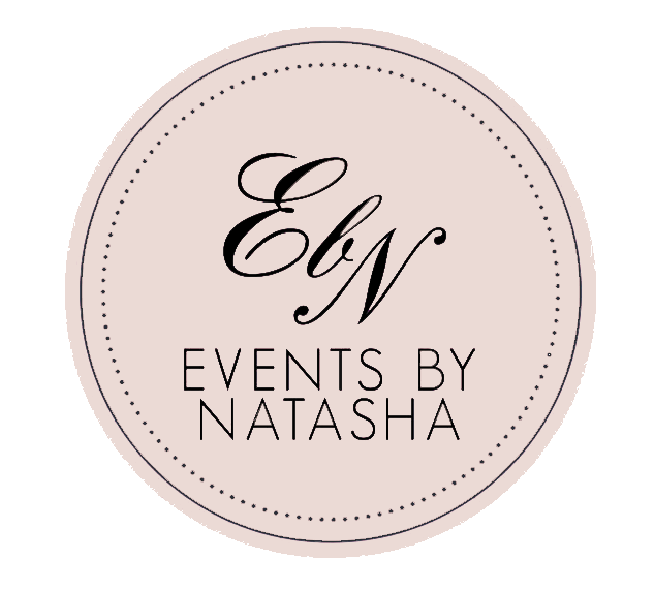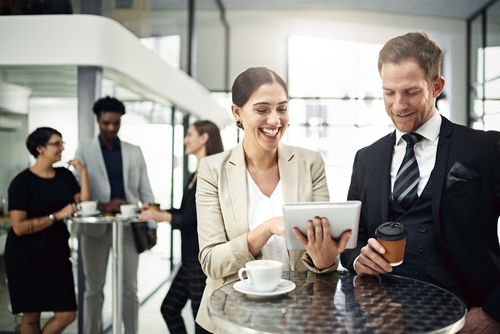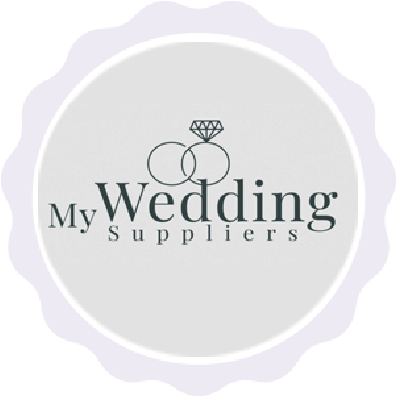Hello and welcome to our blog! We are thrilled to share our knowledge and passion for traditional Jewish wedding rituals and symbolism with you. Our team has years of experience in designing and executing stunning Jewish weddings that honour and celebrate the couple’s unique love story.
Before we dive into the details of Jewish wedding traditions, let’s take a moment to explain why these customs are so meaningful. By incorporating age-old rituals into their modern-day wedding celebrations, Jewish couples connect to their cultural heritage and family values. These practices symbolize the couple’s commitment to each other, their community, and their faith. From the chuppah to the breaking of the glass, each tradition has a deep significance that we will explore in this blog.
At Events by Natasha, we understand that planning a wedding can be overwhelming, especially when incorporating cultural or religious elements. That’s why we offer tailored services that cater to your unique vision and needs. We believe that every couple deserves a wedding that reflects their personalities, values, and love story. Our team of experts is here to guide you through the process and bring your dream wedding to life.
Whether you are a Jewish couple looking to honour your heritage or a couple from a different background interested in learning about Jewish wedding customs, this blog is for you. We hope that our insights and expertise will inspire you and help you create a wedding that is both beautiful and meaningful.
Thank you for joining us on this journey. Let’s explore the wonderful world of traditional Jewish wedding rituals and symbolism together!
The Ketubah
Ketubah is a traditional Jewish marriage contract that outlines the groom’s responsibilities to his bride. It includes financial commitments, such as providing for her needs and giving her a sum of money in case of divorce or death. The Ketubah signing ceremony takes place before the wedding under a canopy known as the chuppah. This symbolizes not only the union between husband and wife but also their commitment to creating a home together.
Before the Ketubah is signed, there is an ancient custom called bedeken where the groom covers his bride’s face with a veil. This comes from Jacob’s marriage to Rachel in Genesis 29:23-25, where he did not realize until after their betrothal that he had married Leah instead of Rachel due to her veil covering her face. By performing this ritual during bedeken, it ensures that the groom knows exactly who he is marrying before proceeding with the rest of the wedding ceremony.
What is a Ketubah?
History and Origins: The Ketubah is a traditional Jewish wedding contract that has been used for centuries. Its origins date back to ancient times when it was used as a way of protecting the rights of women in marriage.
Components of a Ketubah: A typical Ketubah includes various elements such as the names of the bride and groom, their families, witnesses, and the text outlining their obligations to each other. It also includes details about financial compensation in case of divorce or death.
Importance in Jewish Weddings: The Ketubah is an essential component of Jewish weddings and symbolizes the commitment between husband and wife. During the ceremony, it is read aloud under the canopy (chuppah) by two witnesses before being signed by both parties. This signifies not only legal recognition but also emotional commitment to one another.
Ketubah Signing Ceremony
Traditional practices are integral to the Ketubah signing ceremony, which is a sacred moment in any Jewish wedding. Before the actual signing, there is often a bedeken or veiling ceremony where the groom covers his bride’s face with a veil as an act of humility and respect. The betrothal then takes place under the chuppah, or canopy, symbolizing their new home together and God’s presence.
While these traditional practices remain important to many couples today, modern adaptations have also emerged. Some couples choose to write their own Ketubah text or include artwork that reflects their unique relationship. Regardless of how it looks on paper, the meaning behind this document remains unchanged – it serves as a beautiful reminder for couples of their lifelong commitment to each other and to God.
Bedeken
As part of the traditional Jewish wedding rituals, Bedeken is a significant tradition that takes place before the ceremony. The groom approaches his bride while she sits on a throne-like chair and covers her face with a veil. This act symbolizes the story of Jacob who was tricked by his father-in-law into marrying Leah instead of Rachel.
Bedeken is an important moment for both families as it represents respect between them. The groom shows he values his future wife’s inner qualities more than her physical appearance, while the bride’s family acknowledges their trust in him to take care of their daughter. It sets the tone for a meaningful and respectful wedding celebration where both families come together as one.
What is Bedeken?
The Bedeken ceremony is a traditional Jewish wedding custom that takes place before the wedding ceremony. During the Bedeken, the groom approaches his bride and veils her face, signifying his love for her beyond just her physical appearance. Here’s what you need to know about this special ritual:
- The origins of the Bedeken ceremony date back to biblical times when Jacob unknowingly married Leah instead of Rachel because she was veiled.
- Today, the Bedeken is typically performed in a private room with close family and friends present before the official wedding ceremony begins.
- The items used during the Bedeken include a veil and sometimes a prayer shawl (tallit) or white cloth held by two witnesses as they guide the groom toward his bride.
This meaningful tradition adds an extra layer of depth to any Jewish wedding celebration.
Why is Bedeken Important?
The Bedeken ceremony, where the groom veils his bride before the wedding, has deep symbolic meaning in traditional Jewish weddings. It represents modesty and respect for a woman’s inner beauty rather than her outward appearance. Couples often personalize their Bedeken ceremonies to reflect their unique values and personalities, from incorporating family heirlooms to choosing special music or readings.
Bedeken traditions vary across different Jewish communities but always hold the same significance. In some communities, women gather around the bride while she is being veiled to offer blessings and well-wishes. In others, there may be singing or dancing as part of this joyous occasion. No matter how it is celebrated, the Bedeken ceremony remains a cherished tradition that honors both love and tradition at a traditional Jewish wedding.
Chuppah
A Chuppah is a traditional Jewish wedding canopy that represents the couple’s new home together. It typically consists of four poles and a cloth covering, open on all sides to signify hospitality. The bride and groom stand beneath the chuppah during the ceremony with their parents by their side.
Symbolism plays an important role in Jewish weddings, and the symbolism of the chuppah is no exception. Its openness symbolizes the couple’s willingness to welcome others into their lives together, while its cover represents God’s protection over them as they begin this new journey together. The four poles are said to represent each corner of their future home, reminding them of what they’re building towards as they exchange vows under its sheltering embrace.
What is a Chuppah?
The Chuppah is a traditional Jewish wedding canopy that symbolizes the home the couple will create together. The origin of the Chuppah dates back to biblical times when Abraham and Sarah had an open tent to welcome guests. Today, it represents hospitality and is meant to be open on all sides, showing that family and friends are always welcome.
The Chuppah can be constructed from various materials such as beautiful fabrics or flowers, but it must have four poles that represent stability in marriage. During the ceremony, two people hold up the poles while the Rabbi reads blessings over them. The bride and groom stand beneath it for their vows and exchange rings before breaking a glass to commemorate their commitment.
Overall, setting up a Chuppah at a wedding creates intimate surroundings for exchanging vows under religious customs amidst close family members who want nothing more than success in your future life together!
Symbolism of the Chuppah
Representing the home the couple will build together, signifying God’s presence in their union, and the open sides of the chuppah symbolizing hospitality and welcoming in guests are all part of the symbolism behind this traditional Jewish wedding canopy. The chuppah is a sacred space where two people come together to begin a new life as one.
As they stand under its four poles (representing stability), they stand before each other, before their family and friends, and before God. The tradition teaches that just as Abraham’s tent was open on all four sides to welcome travellers, so too should our homes be open to others – which is why we leave the sides of the chuppah open.
Symbolism of Chuppah:
- Represents home-building for couples
- Signifies God present during union
- Openness represents hospitality
The chuppah also serves as a reminder that while marriage is often focused on two individuals coming together into one unit, it takes place within a larger community context with family and friends supporting them along with God.
Breaking of the Glass
The Breaking of the Glass is a traditional and significant moment in Jewish wedding ceremonies. It symbolizes several things, including the destruction of the Temple in Jerusalem and a reminder that marriage, like glass, can be fragile. The groom traditionally stomps on a glass wrapped in cloth to break it, which is followed by shouts of “Mazel Tov!” from guests.
This ritual serves as both a solemn reminder of past tragedies and an expression of joy for newlyweds starting their lives together. During this emotional moment, couples often take time to reflect on their commitment to one another and their responsibility to help repair the world around them.
What is the Breaking of the Glass?
The breaking of the glass is an important tradition in Jewish weddings that dates back to ancient times. This tradition involves the groom smashing a glass with his foot at the conclusion of the wedding ceremony, which creates a loud noise that can be heard throughout the room. While there are different interpretations of this ritual across various Jewish communities, it is typically viewed as symbolizing both joy and sorrow.
Historically, some scholars believe that this practice may have originated from ancient Roman wedding customs where guests would yell out “Benedicat!” (meaning “bless”) as a sign of good luck for newlyweds. Over time, Jews may have adapted this practice by incorporating their own cultural traditions into these blessings.
Although there are variations in how it is performed across different Jewish communities, most agree on its significance as an acknowledgement and reminder of both joyful moments and hardships throughout life’s journey. Ultimately, understanding this symbolism helps to create a deeper connection between couples during their special day.
Symbolism of the Breaking of the Glass
The Breaking of the Glass is a significant tradition in Jewish wedding ceremonies. It symbolizes the fragility and preciousness of marriage, reminding couples that their union should be cherished and protected like delicate glass. Additionally, breaking the glass serves as a reminder of historical tragedies and persecution faced by Jews throughout history. It honours those who came before us and acknowledges their suffering while celebrating our freedom to live openly as Jews today.
Furthermore, shattering the glass represents transformation and new beginnings after shattering old ways. Just as broken pieces can be reassembled into something new, couples understand that they must adapt to changing circumstances in their married life together. The Breaking of the Glass marks an exciting moment for newlyweds to start building a future together with courage, love, and resilience – all important qualities on which any successful relationship relies upon!
Yichud
Yichud is a traditional ritual in Jewish weddings where the newly married couple spends some private time together. It symbolizes their union and the beginning of their new life together as spouses. This moment of seclusion is seen as sacred, providing an opportunity for the couple to connect emotionally and physically without any external interference.
The symbolism behind Yichud represents the importance of privacy, intimacy, and exclusivity in marriage. The sealed room represents a microcosm of their commitment to each other that no one else can enter or disturb. The act also signifies trust between them since they are left alone with each other’s company during this intimate moment. Overall, Yichud reflects not just a physical bond but also emotional closeness between husband and wife that will last throughout their lives together as partners in love and faithfulness.
What is Yichud?
Yichud is a traditional Jewish wedding ritual that involves the newlywed couple spending some private time together immediately after their wedding ceremony. The word Yichud means “union” and it reflects the purpose of this tradition, which is to allow the couple to celebrate and solidify their union in privacy before joining their guests at the reception. This custom dates back centuries and has become an integral part of Jewish weddings around the world.
The period of Yichud usually lasts for about 10-15 minutes, during which time no one else is allowed into the room where the couple is seated. It serves as a symbolic representation of intimacy between husband and wife, representing both physical and emotional unity. The practice also provides an opportunity for couples to reflect on their new relationship status while enjoying each other’s company in solitude before entering into married life fully.
Symbolism of Yichud
During the Yichud ritual in a traditional Jewish wedding, the bride and groom spend some alone time together after their ceremony. This moment represents their commitment to each other and marks the beginning of their married life. Here are a few reasons why privacy is important during this symbolic tradition:
- The couple can reflect on their vows and discuss how they feel about finally being married.
- They have a chance to be intimate with no distractions or interruptions.
- It gives them an opportunity to take a deep breath before joining friends and family at the reception.
The significance of being alone together also highlights that marriage is not just about two people coming together but creating a new unit as well. Through this ritual, couples acknowledge that they need privacy as individuals while also committing themselves to each other as partners for life.
Finally, the symbolism of Yichud shows that marriage isn’t only about love but also requires dedication, trust, and respect. By spending private moments together under God’s watchful eyes’ protection’, they signify that they will cherish one another for all times ahead.










